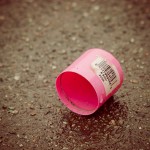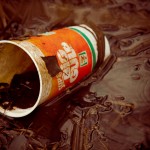Plastic in the Park
I recently watched the documentary Addicted to Plastic, which explores how plastic has contaminated the environment. Plastic is cheap and much of it gets thrown away. It doesn't biodegrade, so every piece of plastic ever thrown out still exits in the environment. It may take hundreds of years to break down. Although increasingly more plastic is being recycled, much goes to landfills, and some eventually makes its way to the oceans. Tons of plastic are now floating in the oceans. Seals, dolphins, sea turtles, fish and birds consume the plastic because it resembles food. The plastic is often lethal because it cannot be digested and just accumulates in the animals' digestive systems preventing them from getting their normal diets.
I took a walk in Vancouver's John Hendry Park (Trout Lake) to see what plastic garbage I could find lying around. It was not hard to find. At first glance the park looks clean and well cared for. But on closer inspection, there are many bits and pieces of plastic. Here is a small sampling of the typical plastic waste that was lying on the ground. There were buy tramadol on line plastic bags, 6 pack rings, fast food containers, disposable lighters, plastic cutlery, old toys, bottles, cups, coffee lids and cigarette package wrappers. This might be surprising since Vancouver is well known as a clean city, where most people are concerned for the environment, taking care to throw out waste in the numerous containers provided by the city. In the next few weeks, I'll be checking out some other public areas in Greater Vancouver to see how they compare.
Plastic is incredibly useful and is everywhere, although it has been around for less than 100 years. Because it is so cheap, we tend to regard it as disposable. But we will need to change how we use and dispose of plastic. There are many options - use other materials when possible, reuse plastics, recycle them, and dispose of them properly. Already biodegradable plastics are available and many more types of plastic can be recycled than are currently handled in most municipal recycling programs.
Here's a short documentary about plastic in the oceans:
Video about the "Great Pacific Garbage Patch"
This video shows what types of plastic were collected in dead albatrosses:
More information:
Greenpeace report on Plastic Debris in the World's Oceans
BBC News story, May 2012: Big Rise in North Pacific Plastic Waste









